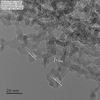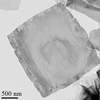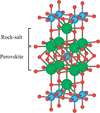issue contents
October 2024 issue

Cover illustration: Magerl et al. [J. Appl. Cryst. (2024), 57, 1282–1287] report on the potential of using GaAs crystals to realize improved Bonse–Hart double-crystal diffractometers. A feasibility study with single-bounce GaAs 200 results in an increase in Q resolution by a factor of six as compared with a standard Si 220 setup.
topical reviews
Open  access
access
 access
accessThis topical review discusses the recent progress in low-dose high-resolution imaging of metal–organic framework materials and gives a brief outlook on possible future directions.
feature articles
Open  access
access
 access
accessA Bonse–Hart camera using a Bragg reflection with a small crystallographic structure factor will enable one to access correspondingly low Q values in small-angle diffraction. This is demonstrated for a neutron double-crystal diffractometer using GaAs 200 reflections, resulting in an increase in Q resolution by a factor of 6.1 as compared with a standard Si 220 setup.
research papers
Open  access
access
 access
accessThe 3D X-ray standing wave (XSW) technique is a new method for characterization of the 3D atomic profiles of planar periodic nanostructures, like nanometre-sized gratings or pillar arrays. The laboratory 3D XSW analysis of TiN gratings with nanometre-sized pitches is demonstrated here.
Open  access
access
 access
accessA new in situ facility (Flow-Xl) for the characterization of crystallization systems in flow using combined in situ X-ray diffraction and Raman spectroscopy is presented. This article highlights commissioning and calibration experiments on case-study systems that stress the utility of the instrument for extracting reproducible qualitative and quantitative phase information during crystallization processes.
Open  access
access
 access
accessThis research uses contrast-matched small-angle neutron scattering to investigate the adsorption behaviour of deuterated methane in a silica aerogel in the pressure range from 0 to 1000 bar. The results reveal a classical reversible two-phase adsorption in the 2.5–50 nm pore size region and no evidence of condensation in the sub-nanometre pores.
Open  access
access
 access
accessThis paper proposes a ptychographic phase-retrieval algorithm combined with a deep neural network (DNN). The proposed method allows the measurement model to be explicitly incorporated into the DNN-based approach, improving imaging capability and robustness to changes in experimental conditions.
The effect of specimen displacement for different experimental geometries has been investigated. The new results allow the accurate analysis of data collected with large displacements.
Takagi–Taupin dynamical X-ray diffraction simulations of cylindrically bent Laue crystals show that, in specific diffraction geometries, the focusing behaviour of such crystals is significantly influenced by dynamical effects, causing the foci of different energies to deviate from the predictions of the `magic condition' derived from geometric optics theory.
Open  access
access
 access
accessThis work presents a novel method for the analysis of small-angle scattering data from a highly aligned domain structure based on a modification of the well known Porod law. The analysis approach allows the range of accessible length scales to be extended from 1 µm to up to 40 µm using a conventional small-angle neutron scattering setup.
Open  access
access
 access
accessA method is showcased whereby the pair distribution function of thin films can be measured with laboratory X-ray tubes down to 80 nm thickness. These findings clear the path for the possibility of utilizing standard modern diffraction equipment to determine thin film pair distribution functions.
Open  access
access
 access
accessReconstruction methods for coherent diffractive imaging of single particles with ultrashort X-ray pulses were tested with various amounts of background noise, investigating the effect on resolution.
Confidence that fluids have completely exchanged in flow cells is crucial for data interpretation and reproducibility. Using a neutron reflectometry liquid flow cell as an example, this article presents a method for harnessing buoyancy effects to fill flow cells that minimizes required sample volume and ensures complete fluid exchange.
A new method is presented for utilizing experimental powder diffraction patterns to rank in silico structures generated using a crystal structure prediction protocol.
Simulation and modelling of the detergent corona around the membrane protein MhsT based on SAXS data
Small-angle X-ray scattering-based modelling of various detergents around a multi-hydrophobic substrate transporter correlates a variation in the shape of the detergent corona with the detergent tail length.
This work examines the effect of the crystallographic orientation of the surface of single-crystal Si wafers on the morphology of NiSi2 nanocrystals, which grow endotaxially within the Si due to thermally diffused Ni atoms from a nickel-doped thin film deposited on the wafer surface. Regardless of the crystallographic orientation or annealing temperature, NiSi2 nanoplates consistently align with Si{111} planes. Although annealing did not substantially change the nanoplate dimensions, crystallographic orientation influenced the number of nanoplates formed.
Open  access
access
 access
accessThe results are presented of a high-pressure neutron powder diffraction study on lead cyanamide, carried out with the novel method of multidimensional Rietveld refinement. In addition to better resolution than the standard one-dimensional case, the results show the first evidence of changing C—N bond multiplicities as a function of pressure, numerically quantified from density functional theory calculations.
Open  access
access
 access
accessMethods for calculation of pair distance distribution functions from coordinate models are evaluated in terms of trade-offs between computation time and accuracy. The results demonstrate approaches that are well suited for application to large nanoscale materials and biological assemblies (>1 MDa molecular weight, >105 non-hydrogen atoms).
Download citation


Download citation


Bismuth oxycarbonate nanosheets, synthesized by nanosecond-pulsed discharges in water, adopt a pinacoid shape dictated by the 4/m2/m2/m point group. The growth mechanism based on the presence of jogs, both on the terraces and fronts, has been clarified.
CCDC reference: 2375768
Open  access
access
 access
accessA procedure to determine the average crystallite size and its distribution using the radial distribution function G(r) of long-wavelength diffraction experiments is presented and tested.
The influence of Si interlayers on the microstructure of the films and boundaries and on the reflective characteristics of Ti/Ni multilayer mirrors have been studied. It has been established that such Si layers perform different functions at different interfaces.
Open  access
access
 access
accessA theoretical investigation is presented of the homo-epitaxies among the three {10.4}-cleavage, {01.2}-steep and {01.8}-flat rhombohedra of calcite.
Open  access
access
 access
accessThe AUREX operando electrocatalytic cell is demonstrated to be a versatile setup for elucidating structure–property relations by means of X-ray total scattering and multimodal absorption and diffraction techniques using an Ag electrocatalyst for proof of concept.
Open  access
access
 access
accessThe influence of optical inhomogeneities of polydisperse particles on measurable structure factors is analysed.
Open  access
access
 access
accessEnergy-dispersive Laue diffraction gives insights on local crystallographic texture variations in demineralized dental enamel and the role of salivary proteins in protecting the enamel structure.
Open  access
access
 access
accessUsing scanning X-ray microdiffraction, we discovered that the small-angle scattering from human brain tissue is due largely to the presence of sub-micrometre-sized voids formed during dehydration of the fixed tissue, while the intensity at wide angles derives from the macromolecular material surrounding the voids. The ability to detect and map the presence of voids within thin sections of fixed tissue has the potential to provide novel information on the degradation of human brain tissue in neurodegenerative disease.
Open  access
access
 access
accessUser-friendly in situ counter-diffusion crystallization and long-term storage setups in microfluidic fixed targets provide a reliable approach to forming large crystals and maintaining their hydration for weeks, allowing ample time to grow, select and preserve the best crystal batches before X-ray beam time.
Open  access
access
 access
accessThis study presents a new, methodologically robust approach for accurately desmearing slit-smeared ultra-small-angle neutron scattering (USANS) data. The proposed technique, validated on porous anodized aluminium oxide membranes, facilitates the precise merging of USANS and small-angle neutron scattering data, offering improved data analysis capabilities in the mesoscale structural research domain.
Open  access
access
 access
accessThe crystal growth rate of the basal plane {010} face of β-form L-glutamic acid is estimated from the shadow widths of the prismatic {021} faces in optical microscopy images. This new approach for the in situ characterization of 3D crystal shape and size is part of wider research into digital crystallization process engineering, encompassing machine learning, morphological population balance modelling and crystallizer hydrodynamics simulation.
The influence of instrument resolution effects on reduced atomic pair distribution function data in a convergent-beam laboratory X-ray diffractometer is demonstrated.
A theoretical analysis of diffraction patterns is presented for two representatives of layered perovskite-type tetragonal phases of the Ruddlesden–Popper (RP) series, containing RP faults in a wide range of concentrations.
Open  access
access
 access
accessA wide-angle short-pulse spallation neutron detector bank is shown to provide an opportunity for data processing to make a pseudo-constant wavelength powder diffraction pattern.
Open  access
access
 access
accessLink between b.c.c.–f.c.c. orientation relationship and austenite morphology in CF8M stainless steel
The microstructural properties of duplex stainless steel are studied on a wide range of scales using a large electron backscatter diffraction data set. Image analysis techniques are coupled with crystallographic data analysis to extract relevant features from a complex microstructure.
teaching and education
Open  access
access
 access
accessSince 2004, the University of South Bohemia has been establishing a tradition in protein crystallography through practical crystallization courses organized under the auspices of the Federation of Biochemical Societies.
Open  access
access
 access
accessIn crystallography there exist a wide variety of online resources such as web pages, interactive applets, databases and programs that can be implemented in both virtual and traditional classrooms. Among these, the Bilbao Crystallographic Server, the Cambridge Structural Database, Mercury, VESTA and Jmol are highlighted for teaching fundamental crystallography since they are useful resources for crystallographic symmetry handling and visualization.
CIF applications
Open  access
access
 access
accessThe conceptual exploitation of the CIF scheme allows the design of databases without deep programming knowledge. With this approach, the modulated structures open database B-IncStrDB, the official International Union of Crystallography repository for this type of material already available through the Bilbao Crystallographic Server, has been re-implemented.
computer programs
Open  access
access
 access
accessDocumentation is presented for the SUBGROUPS tool at the Bilbao Crystallographic Server for the exploration of all possible symmetries resulting from the distortion of a higher-symmetry parent structure (provided that the relation between the lattices of the distorted and parent structures is known).
A database has been developed that comprises protein dimeric structures and their respective interactions. This database provides valuable insights into the type of interaction, including those mediated by water or small molecules and direct interactions.
This paper presents FullProfAPP, a graphical user interface for highly automated powder diffraction data analysis.
laboratory notes
Open  access
access
 access
accessCentring a diamond anvil cell prior to X-ray diffraction measurements is facilitated by use of a confocal optical device.
meeting reports
Free 

This article reports a workshop to discuss the current X-ray-based methods for advancing fuel cell technologies, addressing their limitations and exploring improvements alongside non-X-ray-based techniques.

 journal menu
journal menu





























































